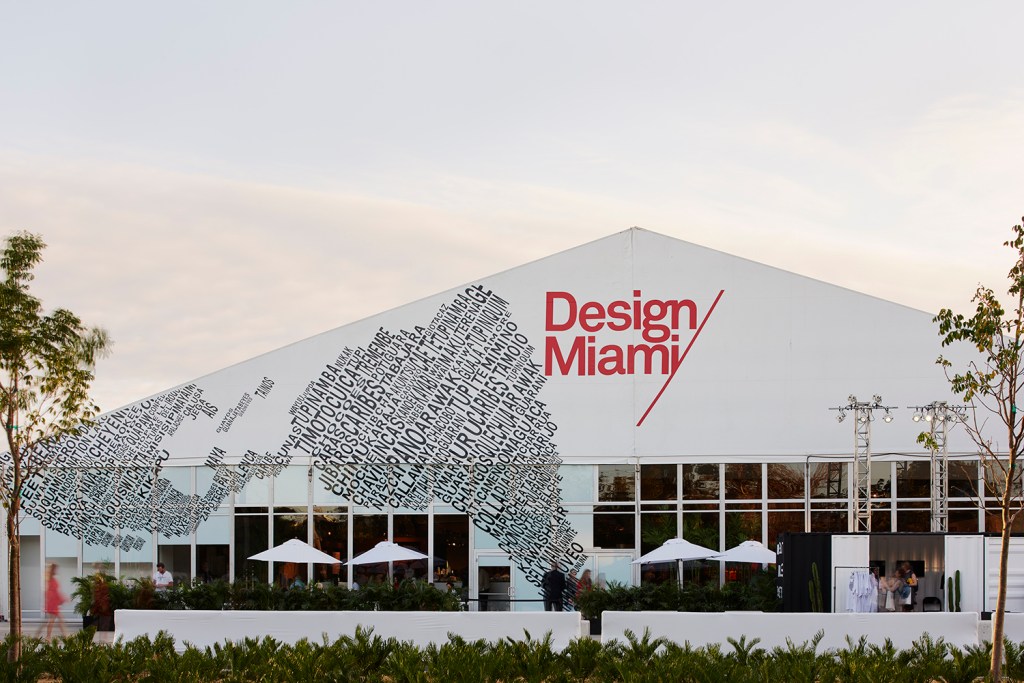Design Miami 2018 was marked by beginnings and endings. It was the last year of the fair under the direction of Rodman Primack, its chief creative officer since 2014. It marked the introduction of Aric Chen, who was named to succeed Primack next year, under the title of curatorial director, only a few days before the fair opened. And it was the first year of a major fixture in the Miami landscape: the new Miami Beach Convention Center, situated immediately next door to the Design Miami tent.
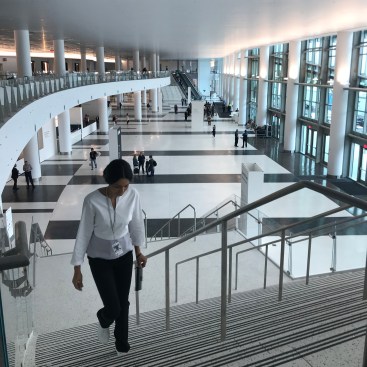
Ian Volner
The new Miami Beach Convention Center, by Fentress Architects and Arquitectonica.
The building—a gleaming steel-and-glass ensemble with white brise-soleil fins—is the work of Fentress Architects, the Denver-based firm of Curtis Fentress, FAIA, with a strong assist from native Miamian office Arquitectonica. (Full disclosure: I wrote an introduction to the latter’s most recent monograph.) Of the many architects on the town during the week of Design Miami, few maintained so high a profile as Arquitectonica’s Bernardo Fort-Brescia, FAIA, beginning on Monday night during a one-on-one conversation with Miami Herald architecture critic Alastair Gordon. Discussing another of the firm’s new projects, the upcoming 57 Ocean apartment high-rise in South Beach, Fort-Brescia noted that the simple Miesian tower was more restrained than much of the firm’s catalogue. “We often do things that are very exuberant,” he said. “With this we wanted to try something calmer.”
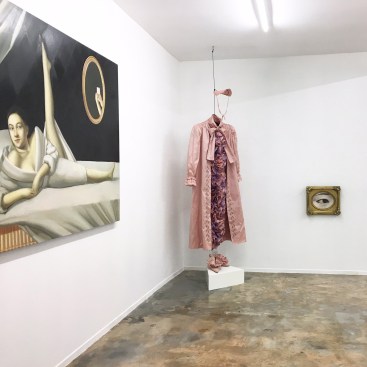
Ian Volner
"Of Purism," at the Nina Johnson Gallery was curated by the principals of Charlap Hyman & Herrero, and features work by artist Anna Weyant and fashion designer Batsheva Hay, among others.
Other architects hovering around the fair included Rafael de Cárdenas (recently returned from Paris, where he had launched pop-up Double Macchiato), Shohei Shigematsu of OMA (in town to show off Park Grove, the firm’s new triple-high rise development in Coconut Grove), and Adam Charlap Hyman, co-principal with brother Alexander and partner Andre Herrero of New York- and LA-based firm Charlap Hyman & Herrero, whose co-curated exhibition “Of Purism” at the Nina Johnson Gallery (featuring work by artist Anna Weyant and fashion designer Batsheva Hay, among others) exuded surreal air similar to the designers’ own. Mark Lee of L.A.’s Johnston Marklee was present in the main tent for a talk on the firm’s recently completed project for the Menil Drawing Institute: the commission, he claimed, had caused him to redub his mullet-like hairdo a “Menil” to honor the streaks of greys it had given him.
Stalking the collectors lounges in the main fair was Italian architect Antonio Citterio, whose first U.S. project Arte is presently wrapping up work in Surfside, Fla. Though a longtime habitué of Miami, the designer confessed the city didn’t grab him right away: “One morning I was walking on the beach, and I just thought, ‘I could spend some months here,’” he explains. A lucky thing, if he could spend those months in his project—located just next to the enormous Surf Club complex, the tower promises to be one of the area’s toniest addresses, with most of its 16 residential units occupying floor-size spaces with 360 degree views to beach and bay.
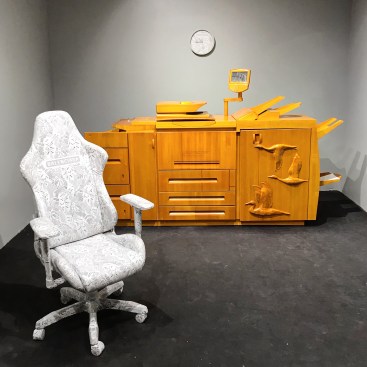
Ian Volner
Harry Nuriev, “The Office”
In the fair, a fan favorite for a second-year running was the work of Harry Nuriev, a Russian-born designer whose offering this time around was entitled “The Office.” Featuring wood-hewn replicas of typical cubical furniture (including a chair, copy machine, and air conditioner), the booth was born of the designer’s own experience as a former worker bee in his native Moscow. “I hated office life, and always wanted to speak about through the eyes of art,” Nuriev says. His revenge was to transform the impedimenta of the workaday world into useless artifacts emblazoned with the name of luxury fashion clothier Balenciaga, simultaneously sending up white-collar tedium and high-end branding.
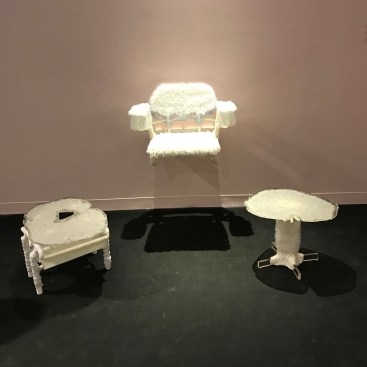
Ian Volner
Théophile Blandet's exhibit at Design Miami, presented by Berlin’s Functional Art Gallery.
Not far off, another standout from the big tent were works by Théophile Blandet, presented by Berlin’s Functional Art Gallery. Composed of mixed plastics, the simple interior ensemble was a cheeky combination of delicacy and crudity, and it elicited an unlikely empathy. Also of note was Philippe Malouin’s collaboration with Calico Wallpaper entitled “The Color and the Shape”: using what the designer termed “decoupage applied directly to the wall,” Malouin achieved a sprezzatura effect, the seemingly artless ripped-up wall treatments actually the result of careful deliberation.
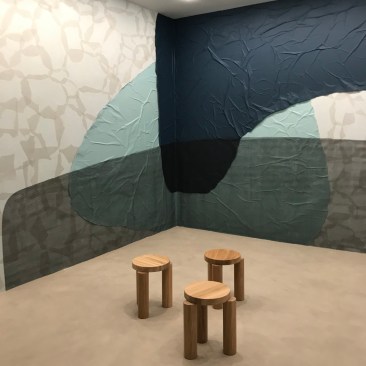
Ian Volner
Philippe Malouin’s collaboration with Calico Wallpaper at Design Miami 2018.
Despite Primack’s impending departure and Chen’s incipient arrival, the mood around the fair did not feel in any way hesitant, its future apparently secure and most exhibitors pleased with the turnout. If there is such a thing as a “typical” Art Basel Miami Beach experience, this one felt that way, its only peculiar feature being a cold snap that caught everyone unawares. At a dinner for HIV/AIDS awareness nonprofit (Red) in the Design District, developer and Design Miami founder Craig Robins flitted from table to table between towering heat lamps—the only source of warmth in a city that seems to keep the air conditioning pumping no matter the weather.
